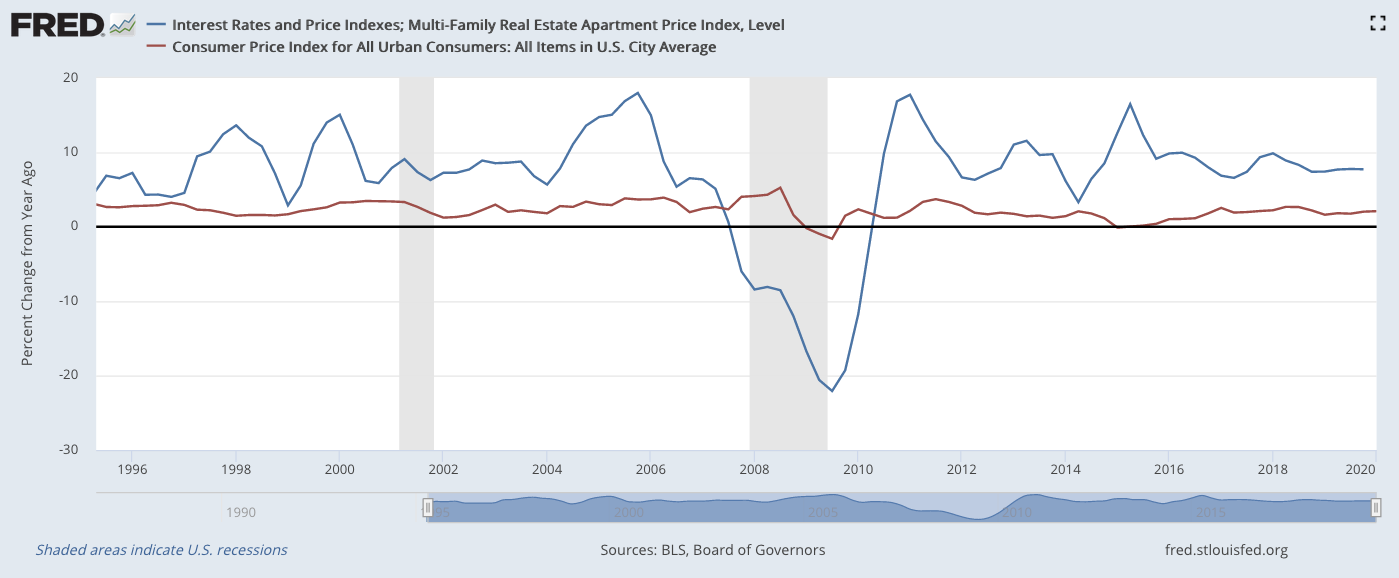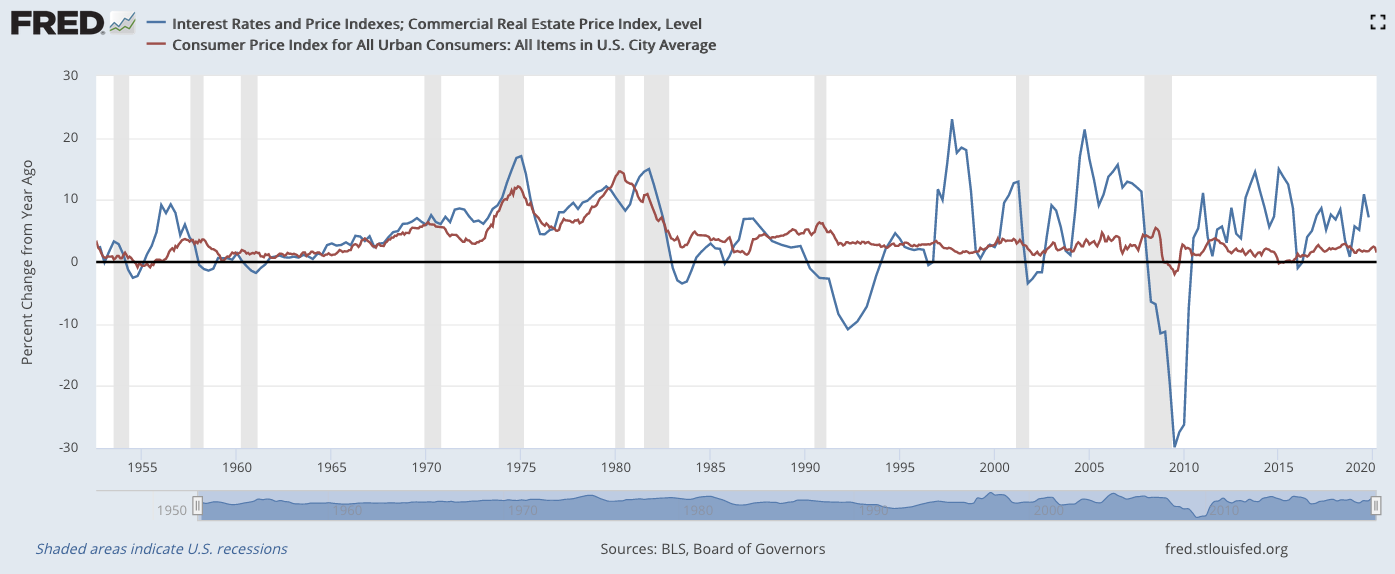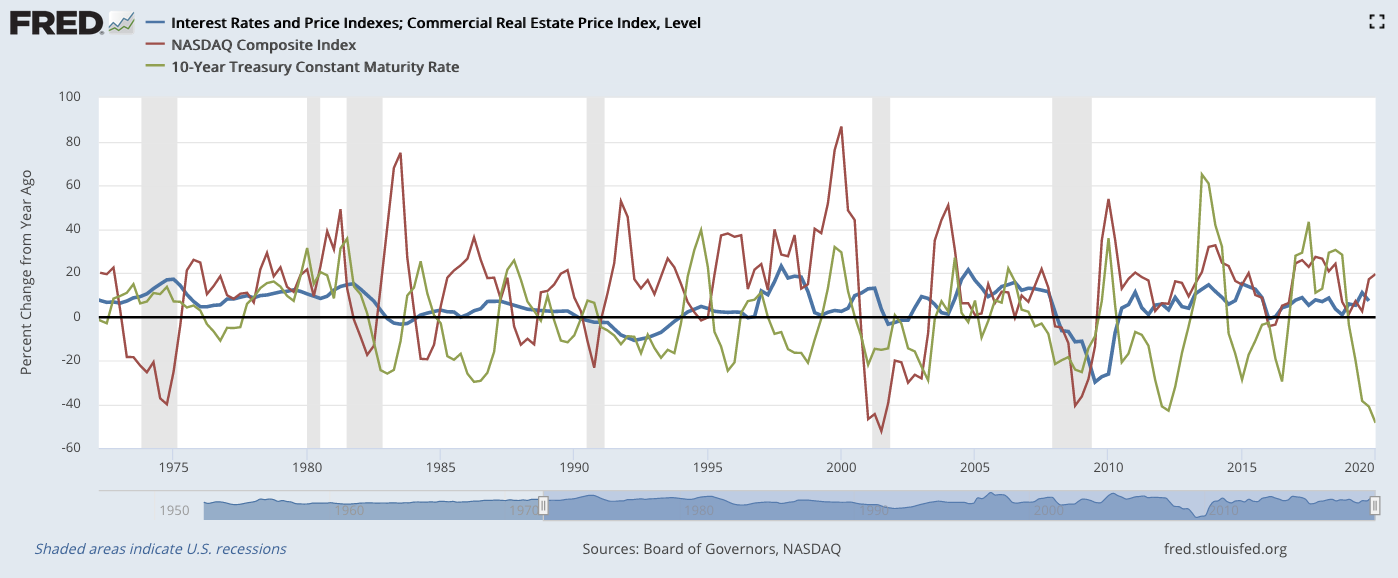The following post was written and/or published as a collaboration between Benzinga’s in-house sponsored content team and a financial partner of Benzinga.
Given the tumult that continues to swell through global economies and financial markets, investors are faced with a variety of uncertainties regarding their investment portfolios. Between the seemingly endless economic stimulus being issued by central banks to the vague fiscal guidance coming from publicly-traded companies, there are very few signposts for investors to follow in order to grow or protect their savings over the long- or even medium-term.
Alternative investments, particularly real estate, often serve to mitigate these economic risks. Because real estate is historically uncorrelated to other assets like stocks or bonds, and due to the fact that they often generate passive income, investors have used real estate as a hedge against uncertainty.
But at the moment, the broad economic disruption caused by the current pandemic has cast a pall over investment assets writ large, with a massive swath of the economic world effectively frozen in place until the pandemic is under greater control.
However, one possible outcome of the current uncertain climate is something investors might not necessarily expect: Inflation.
A New Crisis, An Old Threat
Inflation may seem like a far-fetched prediction now, in a moment of skyrocketing unemployment, disappearing wages and hobbled production. Even before the pandemic, inflation was a rare phenomenon in recent decades, leading to historically low interest rates even as companies registered sky-high revenue and stock prices.
But as the U.S. and the world begin to emerge from the current crisis in the coming months and years, inflation stands to make a big comeback as nations frantically rebuild their workforce and companies re-evaluate their global supply chains.
Visit DiversyFund to Learn How to Avoid Inflation and Build Income Streams
Current economic stimulus measures from the U.S. — now in the trillions of dollars — may already have laid the groundwork for weakening buying power in the USD. Economists are already anticipating that these and further capital injections from the treasury make it likely that cash and fixed-income will lose some of their luster.
In the midst of this heavy-handed fiscal policy, private enterprises are faced with a drastically altered global business landscape. Companies are already grappling with ways to diversify or consolidate their operations to mitigate the same kind of risks they experienced the full brunt of during the global pandemic. This is particularly true for food, medicine and other consumer staples, supplies of which have experienced outsized strain due to the pandemic. While decentralizing the manufacture of these goods and potentially moving them closer to their end consumer in the U.S. will lessen these risks, it also stands to increase the price of those goods.
Any one of these catalysts may serve to heighten inflation risk, threatening higher interest rates, higher borrowing costs, and lower spending among already shell-shocked consumers. And although there is no guarantee of how the coming years will adapt to the current economic situation, the stage is being set for these eventualities, and investors should remain prepared for their long term consequences.
Real Assets, Real Value
As always, the best way for investors to prepare for an uncertain future is by incorporating a diverse array of assets in their portfolio. But with the risk of inflation rising to levels unseen in decades, now more than ever is the time for investors to hedge against dampened returns in more traditional investment vehicles by seeking out real assets that have historically weathered inflationary better than paper assets.
In this respect, commercial real estate in general and multifamily properties, in particular, have in recent history shown resilience to inflationary pressures.
Discover How Diversified REITs or Multifamily Equity Can Work in Your Portfolio
Although inflation has been mild for the better part of the past 30 years, multifamily property values have consistently appreciated by anywhere from 5% to nearly 18% annually, according to data from the Federal Reserve Board of Governors, even as the consumer price index — the Fed’s primary gauge of inflation — approached 4% growth.

Source: U.S. Bureau of Labor Statistics, Board of Governors of the Federal Reserve System
Chart: FRED, Federal Reserve Bank of St. Louis
Broader historical commercial real estate data from over the course of nearly 70 years reveals this trend is fairly consistent, with commercial property values largely keeping pace with inflation, while tending to retain value in periods of lower inflation.

Source: U.S. Bureau of Labor Statistics, Board of Governors of the Federal Reserve System
Chart: FRED, Federal Reserve Bank of St. Louis
This elasticity of value is even more pronounced when compared to the volatility of other assets like stocks and bonds, which you can see in a comparison of the year-over-year change in commercial property values against that of either the Nasdaq composite (red) index or the 10-year U.S. Treasury note (green).

Source: Board of Governors of the Federal Reserve System, NASDAQ OMX Group
Chart: FRED, Federal Reserve Bank of St. Louis
Obviously, each asset has had it’s boom and bust periods. However, real estate has remained the most resilient to both recessionary and inflationary pressures.
Real Estate Investing, A Matter Of Time
The coming months and years will bear out the economic fates of private business, the U.S. economy, and the global market as all parties grapple with their respective vulnerabilities and strengths in this time of crisis.
Although investors will likewise have to wait and see the consequences of the current turmoil, whether inflationary, recessionary, or something else entirely, DiversyFund has options for investors hoping to add diversification in real assets to their portfolios.
The DF Growth REIT offers investors a diversified real estate product that provides both broad exposure to value-add multifamily property while also maintaining liquidity. Longer-term investors can research and invest in direct equity ownership of an array of multifamily properties in the DiversyFund Portfolio.
Even though there remains much that’s uncertain in the current economic environment, investors should not underestimate the growth potential in uncertainty, especially for those who are prepared for all contingencies.
The preceding post was written and/or published as a collaboration between Benzinga’s in-house sponsored content team and a financial partner of Benzinga. Although the piece is not and should not be construed as editorial content, the sponsored content team works to ensure that any and all information contained within is true and accurate to the best of their knowledge and research. This content is for informational purposes only and not intended to be investing advice.
© 2025 Benzinga.com. Benzinga does not provide investment advice. All rights reserved.
Trade confidently with insights and alerts from analyst ratings, free reports and breaking news that affects the stocks you care about.